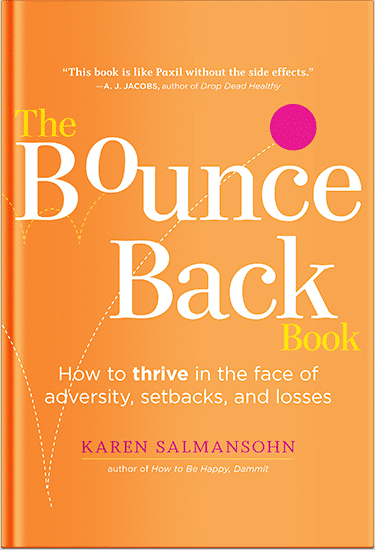 Have you ever walked into a room and immediately felt drained, or stepped outside after a storm and felt lighter? It’s easy to think of health as just diet, exercise, or how many hours you sleep, but the spaces we live in and the air we breathe matter just as much. Your environment has been quietly shaping your health all along, from the cleaning products under your sink to the traffic outside your window.
Have you ever walked into a room and immediately felt drained, or stepped outside after a storm and felt lighter? It’s easy to think of health as just diet, exercise, or how many hours you sleep, but the spaces we live in and the air we breathe matter just as much. Your environment has been quietly shaping your health all along, from the cleaning products under your sink to the traffic outside your window.
Over the last few years, scientists and doctors have been louder about this link. Studies tie air pollution to heart disease. Researchers show how noise in cities affects stress hormones. Even indoor lighting patterns are being connected to sleep disorders. It’s not just about avoiding “bad habits” anymore. It’s about noticing what surrounds us, because our surroundings become part of our bodies in ways we often ignore.
This shift is also cultural. People are questioning what “wellness” means. It’s no longer just green juice and meditation apps. It’s filtered water, walkable neighborhoods, and home offices with natural light. We’re beginning to see health as more than personal choices—it’s social, environmental, and sometimes political. In this blog, we will share how your environment influences your long-term health, what risks often go unnoticed, and what you can do to protect yourself without feeling overwhelmed.
The Silent Influences Around You
Think about your daily routine—lighting a candle, grabbing coffee, sitting in traffic. Each has hidden effects: candles release particles, coffee may carry pesticides, and traffic exposes you to exhaust. Over time, these small details add up, creating a steady drip of stress on the body.
That’s where science comes in. To understand how chemicals, pollutants, and substances affect people, researchers study them in controlled ways. When you look at the facts about toxicology, you realize how much of our environment plays a role in health. Toxicology is the science of how substances interact with living systems. It tells us why lead in old paint is dangerous, why asbestos was banned, and why certain additives in foods are still debated. These aren’t distant problems. They’re reminders that our health is tied to what we put into our homes, neighborhoods, and even schools.
This is also why policy matters. When cities set clean air standards or ban harmful pesticides, they’re not just “regulating”—they’re shaping the health of generations. On a smaller scale, even personal choices, like swapping plastic food containers for glass, are influenced by what toxicology teaches us. It’s the bridge between abstract science and practical decisions families make every day.
Air, Light, and Noise: The Everyday Trio
Air quality has become a global headline, especially after wildfires blanketed parts of North America with smoke. Millions experienced firsthand how bad air doesn’t just sting your eyes—it changes how you breathe, sleep, and function. Long-term exposure to polluted air has been tied to asthma, heart disease, and even cognitive decline. It’s no longer an issue confined to industrial towns. It’s affecting suburbs, cities, and rural communities alike.
Then there’s light. Natural sunlight boosts mood, regulates sleep, and helps vitamin D production. But artificial light, especially blue light from screens, can confuse your body’s rhythms. Ever felt wide awake at midnight scrolling on your phone? That’s your environment tricking your brain into thinking it’s still daytime. Over years, disrupted sleep adds up, influencing everything from mental health to metabolism.
Noise is another culprit that sneaks under the radar. Studies show that people living near busy roads or airports have higher risks of hypertension and anxiety. Your body treats constant noise like a stressor, keeping you in a low-level fight-or-flight state. That background hum you’ve “tuned out”? Your body hasn’t.
What You Can Control at Home
The good news is, not everything is outside your control. Small adjustments at home can reduce exposure and help your body recover. Start with air. Invest in plants or a basic air purifier if you live in a city or wildfire-prone area. Open windows when outdoor air quality is good. For light, aim to get outside in the morning, even for ten minutes. At night, dim indoor lighting and cut screen time before bed.
As for noise, think about adding rugs, curtains, or white-noise machines to soften what reaches your nervous system. It’s not about building a bubble. It’s about stacking small advantages that let your body recharge.
Even cleaning habits matter. Many households are shifting from heavy chemical cleaners to gentler alternatives like vinegar or baking soda solutions. These reduce indoor air pollution and are usually safer for kids and pets. Little changes like these don’t make headlines, but they can make your home feel less like a stress trap and more like a refuge.
The Social Side of Environment
Your surroundings also include the social environment—friends, neighbors, and communities. Isolation, highlighted during the pandemic, showed how strongly connection impacts health. Loneliness has been compared to smoking in its toll on the body. On the other hand, communities with strong social ties often see better overall well-being, even if other resources are limited.
Public spaces also matter. Parks, playgrounds, and walkable streets encourage activity and reduce stress. Cities investing in green spaces aren’t just beautifying—they’re making long-term health investments. When families have safe places to gather, kids get more exercise, adults relieve stress, and older adults stay active longer.
Why This Matters Now
The reason environment is such a hot topic in health today is because it’s increasingly clear that willpower alone can’t outwork surroundings. You can eat well, exercise daily, and still face risks if your environment is stacked against you. The water you drink, the air you breathe, and the noise you hear every night all shape your long-term health.
At the same time, awareness is power. Knowing these influences helps you make choices where you can—whether that’s picking safer materials, voting for cleaner policies, or simply opening a window at the right time of day.
We’re living in a moment when health isn’t just personal anymore. It’s shared. And recognizing how our environments shape us might be the key to not just surviving, but thriving, in the long run.
P.S. Before you zip off to your next Internet pit stop, check out these 2 game changers below - that could dramatically upscale your life.
1. Check Out My Book On Enjoying A Well-Lived Life: It’s called "Your To Die For Life: How to Maximize Joy and Minimize Regret Before Your Time Runs Out." Think of it as your life’s manual to cranking up the volume on joy, meaning, and connection. Learn more here.
2. Life Review Therapy - What if you could get a clear picture of where you are versus where you want to be, and find out exactly why you’re not there yet? That’s what Life Review Therapy is all about.. If you’re serious about transforming your life, let’s talk. Learn more HERE.
Think happier. Think calmer.
Think about subscribing for free weekly tools here.
No SPAM, ever! Read the Privacy Policy for more information.
One last step!
Please go to your inbox and click the confirmation link we just emailed you so you can start to get your free weekly NotSalmon Happiness Tools! Plus, you’ll immediately receive a chunklette of Karen’s bestselling Bounce Back Book!


 Have you ever walked into a room and immediately felt drained, or stepped outside after a storm and felt lighter? It’s easy to think of health as just diet, exercise, or how many hours you sleep, but the spaces we live in and the air we breathe matter just as much. Your environment has been quietly shaping your health all along, from the cleaning products under your sink to the traffic outside your window.
Have you ever walked into a room and immediately felt drained, or stepped outside after a storm and felt lighter? It’s easy to think of health as just diet, exercise, or how many hours you sleep, but the spaces we live in and the air we breathe matter just as much. Your environment has been quietly shaping your health all along, from the cleaning products under your sink to the traffic outside your window.